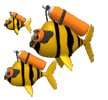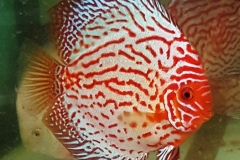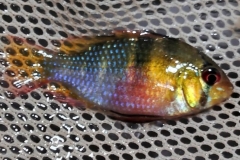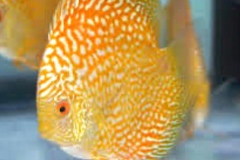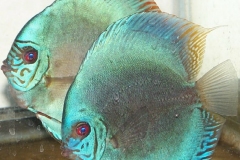Discus Fish can range anywhere from $15.00 for a juvenile common Discus Fish such as a Red Turquoise at an online store to over a Thousand for a fully mature very rare Discus such as an Albino Platinum Long Finned Discus. A proven breeder pair of Long Finned Albino Platinum Discus Fish could cost around $10,000.00. You will find the starting point for Discus Fish at your local fish store is around $50.00 if you can find them at all.
Monthly Archives: February 2024
Why are Discus so Expensive?
Discus are in my opinion the most beautiful freshwater fish. The most prominent species of Discus (Symphysodon Aequifasciatus) has more color and pattern variations of any other fish, with possible the exception being Guppies.
That is why they are in High Demand.
They are notoriously in hard to breed, with the fry needing to eat slime off the side of their parents for the two weeks. Unfortunately, the parents almost always eat them. If you try to raise them artificially, it is extremely labor intensive for the first two weeks, requiring you to do water changes and feeding the fry every four hours. They also grow much slower than other Cichlids that are similar, such as Angelfish.
The reason that they are so expensive is because they are in high demand and in low supply as there are less of them than is necessary to drive the price down.
Things you should know about Plecos
1) ALL SPECIES OF PLECOS ARE DIFFERENT! Some like muddy, hot, slow moving water (Stripes Peckoltia). Some like crystal clear, fast moving water that is a little cooler (Blue Panaque).
2) All Plecos have different food requirements. Some eat algae. Some are carnivorous. Some are scavengers. Some eat wood. Most will eat a combination of the above.
3) Some Plecos can be aggressive to other fish, especially slow moving or sick ones. The most aggressive are the Gibbiceps. Royals can also be somewhat aggressive to each other, but rarely to other fish.
4) Many Plecos can grow quite large, so make sure that you have enough aquarium space for them to grow into.
5) Coloration in Plecos can be remarkably different within a species, depending on the region where the Pleco was caught.
6) Most plecos show some characteristics of chameleon like color changes depending on their background (the L060 Lyretail Chameleon Pleco and the L110 Red Spot Bristlenose are good examples), so keep that in mind when you set up their aquarium.
7) Many, if not most, are good community fish. Ones we recommend the most to keep with slow moving fish such as Discus and Angelfish are the Bushy and Bristlenose. Some of our other favorites are Striped Peckoltia, Snowball, Clown and Royal Plecos.
8) While it does seem to be counter intuitive, Plecos can be jumpers, especially the Bristle and Bushy nose. We recommend keeping the water tanks with Plecos about an inch and a half below the rim.
9) The best Internet reference for Plecos is Planet Catfish who’s link is http://www.planetcatfish.com/core/
